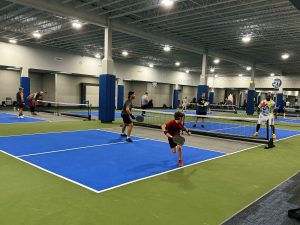Providing a venue for athletes and guests comes with risk. Slip and falls and other incidents are an unfortunate and inevitable part of bringing people together and while it’s not always pleasant to think about, protecting your venue and team members is an essential part of being a facility operator.
At the Sports Facilities Companies, we’ve analyzed thousands of facilities around the country and currently manage award-winning venues through the SFM Network. Through our work and experience, we’ve learned a variety of best practices for risk management some of which we will share in this article.
First and foremost, when thinking about risk management for sports complexes, it’s important to consider the difference between creating a safe environment and guaranteeing safety. You can follow best practices to create a safe environment for guests. However, some guests may not adhere to safety guidelines, making it nearly impossible to ensure their safety. All actions you take to reduce risk, including the strategies described below, should be conducted with that consideration in mind.
Practice Risk Transfer
The event rights holders and outside companies providing programming have a closer connection with the end users of your facility than you do. Accordingly, it makes sense for them to bear a larger responsibility for the actions of guests than the facility operator. To protect your facility, requiring all event rights holders to provide a certificate of insurance (COI) with a minimum $1 million in general liability coverage and names the facility as an additional insured on their policy is critical. It’s also critical that all facility users sign a personal waiver prior to the event or program participation. Additionally, facility use agreements should be employed when renting your facility, which also requires the COI. Doing so outlines conditions and expectations for facility use.
Take Risk Out of the Environment
The best way to manage risk at your facility is to build an environment that reduces risk from the start. Making sure all aspects of your facility are in the best condition possible is a given, but it’s equally important to have a system for reporting hazards that makes it easy for anyone to report unsafe conditions, equipment or actions. Regular equipment inspections must be planned and executed routinely. This plan should include how often inspections should take place, documentation stating that the inspection occurred and who is responsible for any follow up.
Other methods for reducing risk include:
Continually reminding guests of safety measures: They may not remember, be cognizant of or be resistant to safety guidelines. That’s why reminders are critical. Putting up a sign is not enough in most cases.
Reduce risk in storage areas: Storage areas can present a great deal of risk because they are small and boxes may be stacked high, interfering with sprinkler systems. Check with your local fire department on minimum distance requirements for sprinkler heads. Consistently review your storage areas and make sure they don’t become overcrowded. To help in this process, create a system for both where items will be stored and the timeframe they will be stored before throwing or giving them away.
Building a Culture and Process
Creating a safe environment for guests and staff starts at the management level. His/her actions will set the tone for how the rest of the staff behaves. For example, if you see trash in the parking lot and pick it up, not only will it show care for the facility, it can also mitigate risk. Demonstrating to others that you are willing to perform these tasks will lead them to do the same.
Additionally, it’s important to build ways in which employees are empowered to communicate with management about safety concerns or hazards. This may include the use of weekly meetings, bulletin boards, and comment cards.
Lastly, an Injury and Illness Prevention Program (IIPP) can be a great way to provide information, training and guidance on work safety practices. The typical program includes information on safety process responsibilities, ways to communicate hazards, training requirements, procedures for reporting accidents, and safety checklists.
For nearly 20 years, the SF Companies have worked in hundreds of communities and have become the industry leader in sports facility management. To learn more about how we achieve unprecedented success for facilities throughout the country, contact us at 727-474-3845.
Disclaimer: The information contained in this article is for general educational purposes only. This information does not constitute legal advice, is not intended to constitute legal advice, nor should it be relied upon as legal advice for your specific factual pattern or situation.






